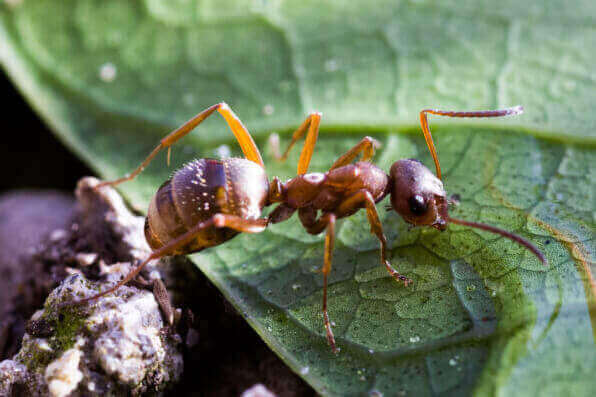Odorous House Ant Facts & Information
Everything you need to know about odorous house ants
what do odorous house ants look like

Odorous house ants are not only smelly, but they are also quite small, measuring approximately 1/8 inch long. They have dark brown or black bodies with an unevenly shaped thorax. They have a single node on their petiole, hidden by their abdomens. However, the true telltale characteristic of the odorous house ant is unquestionably the foul odor they emit when their bodies are crushed. It smells like rotten coconut. Odorous house ants like to eat sweets and are especially fond of honeydew. They are known to move their nests every three months or so in response to rain. Indoors, odorous house ants nest near moisture sources, such as in wall voids near hot water pipers, in heaters, beneath leaky fixtures, and inside wood damaged by termites. Outside, odorous ants are often found in exposed soil or under stacks of firewood.Not the ant you have?
How Did I Get Odorous House Ants
Our pantries are full of stuff odorous house ants love to eat. In addition, even the smallest amount of water is enough for an ant to live on. That just leaves shelter – and your building has that, too. Just by having the three things they need to survive, you’ve attracted odorous house ants into your home or business. It’s not that simple, though. Errant crumbs, spills left uncleaned, dishes left in rooms or even in the sink – all of this can attract odorous house ants… and cockroaches, flies, mice, and a myriad of other pests. Proper sanitation, cleaning routines, and tightly fitted trash can lids can all help with many pests, including odorous house ants. If there are cracks and crevices letting them in, that will definitely exacerbate the problem. Even a loose screen on a door or window can look like a big welcome sign to these tiny pests.
Where Do Odorous House Ants Live
Odorous house ants can develop extremely large colonies but tend to maintain colonies of only several thousand workers with many queens. Winged reproductives appear in May through July. Workers are very active and move rapidly in single files. They mostly prefer sweets but will also feed on dead insects and grease. Nests are typically found outside under rocks, boards, and the like, but they can nest within structures. Colonies are from hundreds to many thousands of individuals in size. Odorous house ants will nest indoors near sources of moisture and warmth, in voids, but also in termite-damaged wood. These ants feed on many different items including most items found in homes but prefer to feed on those high in sugars. Outside, they will feed on honeydew excreted by aphids and on nectar from flowers and buds. Their ability to feed on many types of food brings makes them adaptable to living just about anywhere.
What Problems Do Odorous House Ants Cause
If odorous house ants are left unchecked and untreated, they will form a large colony. If it does get large enough, they will swarm and create a new one much like termites do. They also leave a pheromone trail to their friends so they can find their way into your home or business if you have the sweet spills they enjoy the most. It’s like leaving a trail of invisible breadcrumbs and all of a sudden, you have a bunch of odorous house ants. Bring in the odorous house ant exterminator you need for proper ant treatments.
How Do I Prevent Odorous House Ants
Pests such as odorous ants are attracted to moisture. To prevent odorous house ants, eliminate standing water. Keep tree branches and other plants cut back from the house. Sometimes odorous ants use these branches to get into the building. Make sure that there are no cracks or little openings around the bottom of the foundation. A professional pest exclusion expert can help with that since these ants are pretty tiny and even the smallest crack needs to be addressed. Ensure firewood and building materials are not stored next to the home because odorous house ants like to build nests in stacks of wood.
Why Waltham for Odorous House Ant Control
We’re passionate about keeping odorous house ants out of your home or business because we live and work here – it’s our neighborhood, too. With our 130 years of experience keeping homes and businesses in Massachusetts, Connecticut, New York, Maine, Vermont, New Hampshire, and Rhode Island safe from pests, Waltham has the experience you can trust.
Satisfaction Guarantee
24-Hour Guaranteed Response
Board Certified Entomologists
Need help with odorous house ants?
GET MY QUOTE
“Exceptional service. Prompt and professional. Used for both business and home. Very efficient and honest.”
Agawan, MA
